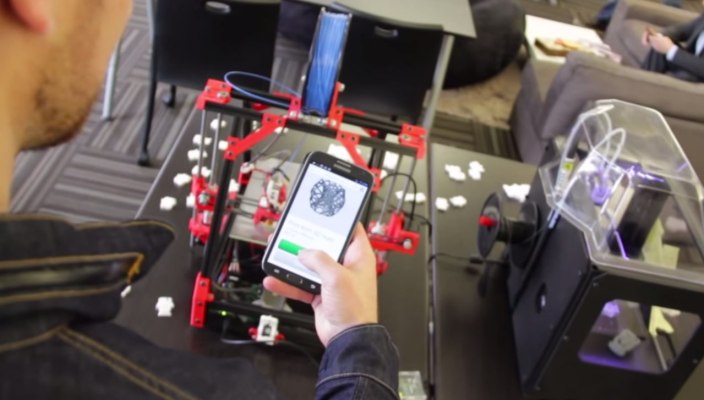Calgary-based PrintToPeer is a crowdfunded project aimed at networking open-source and commercial 3D printers in one location or around the world, thereby allowing users to send jobs to distant printers. It’s not something you’d think you’d need, but if you harken back to the old days of central laser printers, you can understand the value of having one expensive, high-maintenance printer queuing jobs in some basement rather than placing a power-hungry printer on every desk.
Founded by twenty-somethings Tom Bielecki, James Thorne, and Kaz Walker, the company is part of the GrowLab accelerator in Vancouver. The system uses a Raspberry Pi to send jobs to the printer.
“All you really do is attach the Raspberry Pi to the 3D printer via USB and it works,” said Bielecki.
“3D printers are just too difficult and slow to use, so we knew that by making it easier this technology could be accessible to anyone and people would print more often. We’re big fans of automation and abstraction, so fixing fragmentation in 3D printing with a common platform lets us–as software developers–start to build apps with real-world uses. We really can’t wait to see how developers use the API to bring tangible experiences and rewards to their software,” he said.
The platform works with Makerbot and Marlin 3D compatible printers and allows you to send STL object files, the common file format used by most printers, to the Raspberry Pis. The system then slices the object and sends it out to the printer. A printer manager shows which jobs are printing now and you can set it up to send notifications when each print is done. The system also supports remote camera viewing of print jobs. As a 3D printer owner who does not relish the inevitable trek up my stairs just to confirm if a print has finished, those features alone are worth the price.
PrintToPeer will be an open-source project but you can buy a Raspberry Pi, camera, and the software on an SD card for $140. The company is allowing developers to work with the platform right now. They are looking for $15,000.
“There are several companies locking down 3D printing with DRM and walled gardens, but these tactics are just plain bad for consumers. Customer lock-in comes from a fear that if you give users a choice they will abandon your platform, but that’s what drives us to innovate, and to have a great user experience,” said Bielecki.
“3D printer software has been neglected while everyone focused on 3D printer hardware. It’s really painful to use. And with 3D printers coming into schools, it’s never been more important than to share the 3D printers on a network.”
